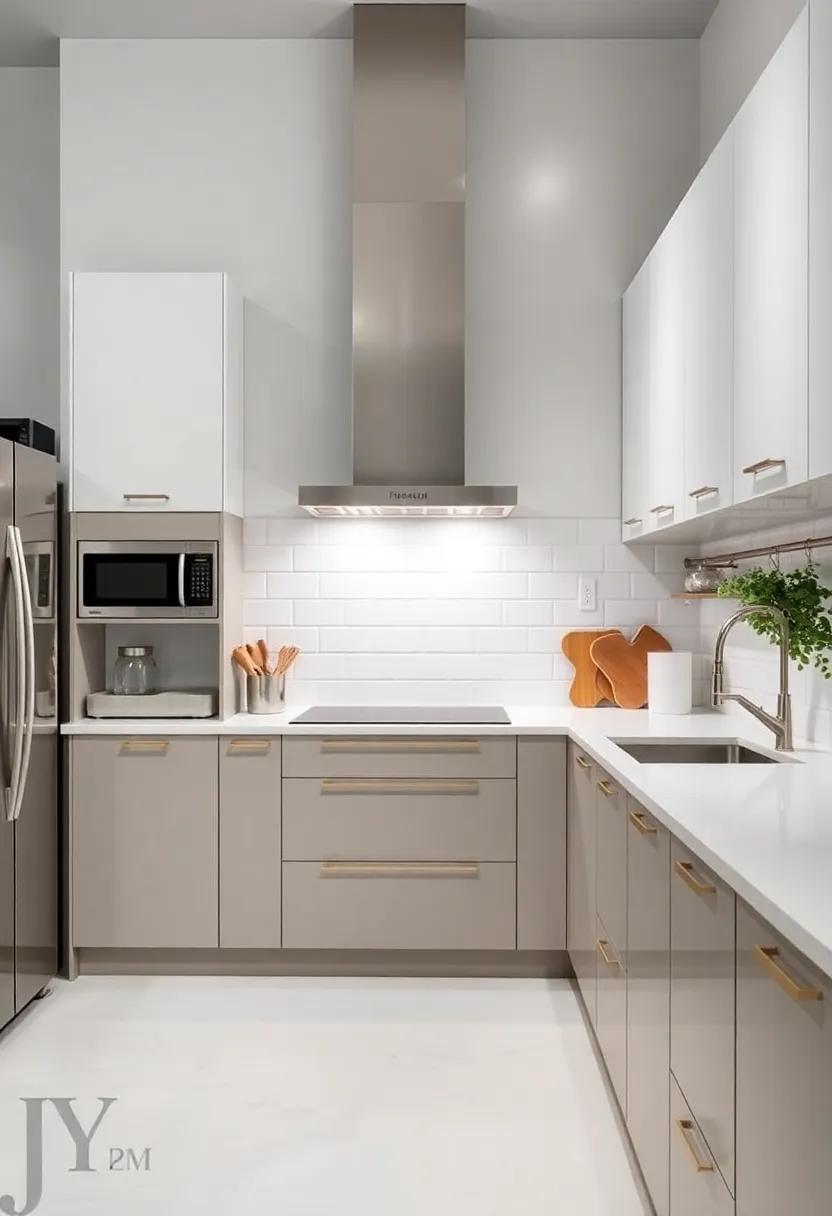In the heart of every home lies a space where flavors meld, aromas dance, and culinary dreams take shape—the kitchen. Often considered the soul of the household, this area serves as a canvas for creativity and connection. However, over time, even the most beloved kitchens can fall victim too monotony or outdated design. If you find yourself in need of inspiration, “” is here to light the way. This article invites you to embark on a journey of conversion, exploring innovative ideas that blend functionality with aesthetic appeal. Weather you envision a sleek modern haven or a cozy rustic retreat, our curated suggestions will help you reimagine your kitchen interior, creating a space that not only reflects your personal style but also elevates your culinary experiences. Let the metamorphosis begin!
Creating a Dream Culinary Sanctuary with Open Concept Designs for Your Kitchen
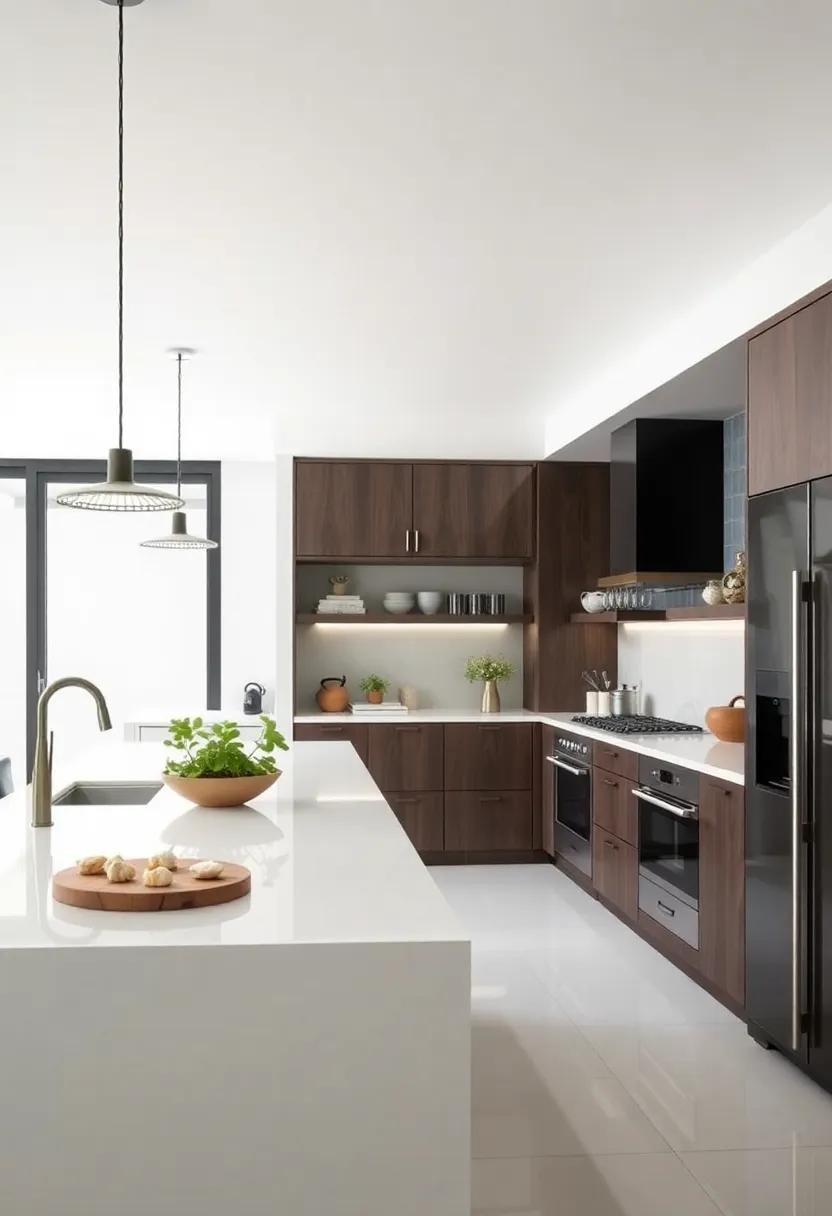
Embrace the elegance of an open concept kitchen, where functionality meets style. This design effortlessly blurs the lines between cooking and socializing, making it the heart of the home. Consider incorporating large islands that not only enhance counter space but also serve as a casual dining area. When choosing finishes and colors, think about soft neutrals that can create an inviting atmosphere while allowing your culinary tools and ingredients to take center stage.Elements such as pendant lighting and glass cabinets can add a touch of sophistication without overwhelming the space.
To truly create a culinary sanctuary, pay attention to the details that enhance both aesthetics and practicality. Use open shelving to showcase your favorite cookbooks and decorative dishware, while maintaining a clean and clutter-free countertop. Incorporate varied textures such as hardwood and stainless steel for a vivid, layered look. Additionally, consider integrating smart technology with built-in appliances that blend seamlessly into the design, bringing modern convenience to your cooking experience. Explore more on open concept kitchen ideas at Houzz for additional inspiration.
Embracing Minimalism in Kitchen Interior: Streamlined Spaces for Culinary Creativity
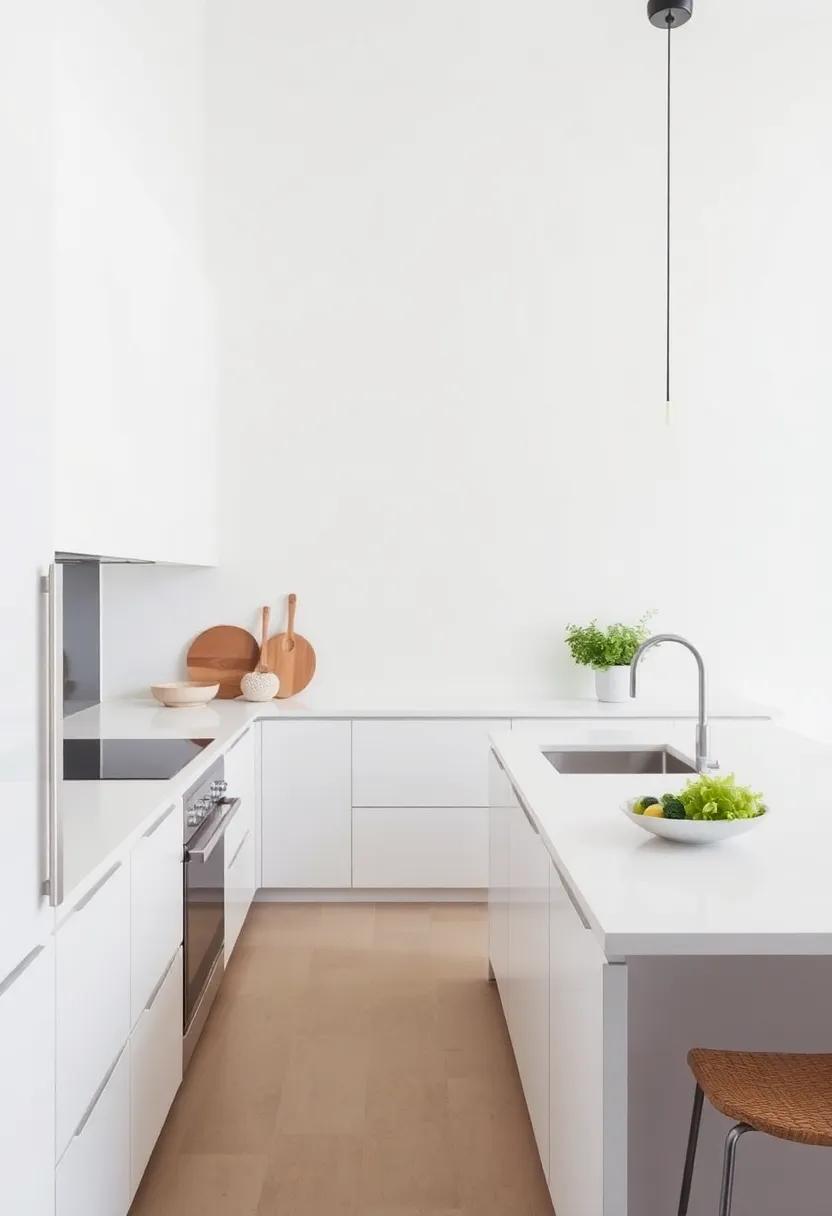
Minimalism in kitchen interior design emphasizes the beauty of simplicity, creating an habitat that fosters culinary creativity while reducing distractions.The focus is on clean lines and functional layouts that highlight the essentials. This can be achieved by incorporating elements such as flat-front cabinetry, open shelving, and a limited color palette. By eliminating clutter, you can showcase your favorite cookware and ingredients, turning everyday items into decorative accents. Consider using materials like wood, metal, and stone that resonate with a minimalist aesthetic while offering durability and style.
To enhance the streamlined look of your kitchen, it’s important to choose fixtures and appliances that complement the minimalist vision. Opt for integrated appliances that blend seamlessly into the cabinetry, and select lighting that highlights the workspace without overwhelming it. Creating designated zones for cooking, prep, and dining can further refine the space, promoting an organized workflow. Here are some design tips to embrace minimalism:
- Utilize neutral colors with occasional pops of color for a fresh feel.
- Incorporate multi-functional furniture that can be easily stowed away.
- Choose decor items that serve a purpose, such as stylish storage containers.
For further inspiration and inventive ideas, take a look at Architectural digest,where the intersection of simplicity and style is beautifully showcased.
Maximizing Functionality: Innovative Storage Solutions for Every Kitchen Size

maximizing a kitchen’s functionality requires innovative thinking and clever design.For smaller kitchens, using vertical space can transform a cramped area into an efficient workspace. Consider installing open shelving or hanging pot racks that not only showcase your cookware but also keep essentials within arm’s reach. Utilize the back of cabinet doors for additional storage by adding hooks for utensils or spice racks to ensure every inch is utilized effectively. Magnetic strips are also a fantastic way to keep knives and kitchen tools organized and accessible while freeing up drawer space.
For larger kitchens, modular storage systems can provide a multi-functional approach without overwhelming the space. Solutions like pull-out pantry drawers or island cabinets with integrated seating can accommodate storage needs while enhancing the kitchen’s social atmosphere. Adding a kitchen cart offers versatility, allowing for additional surfaces and storage that can be moved as needed. Each of these ideas creates an inviting culinary space that marries functionality with style, ensuring your kitchen is ready for both cooking and entertaining. For more inspiration on efficient kitchen design, explore resources at House Stunning.
Integrating Natural Light into Your Kitchen Design: The Power of Bright Spaces
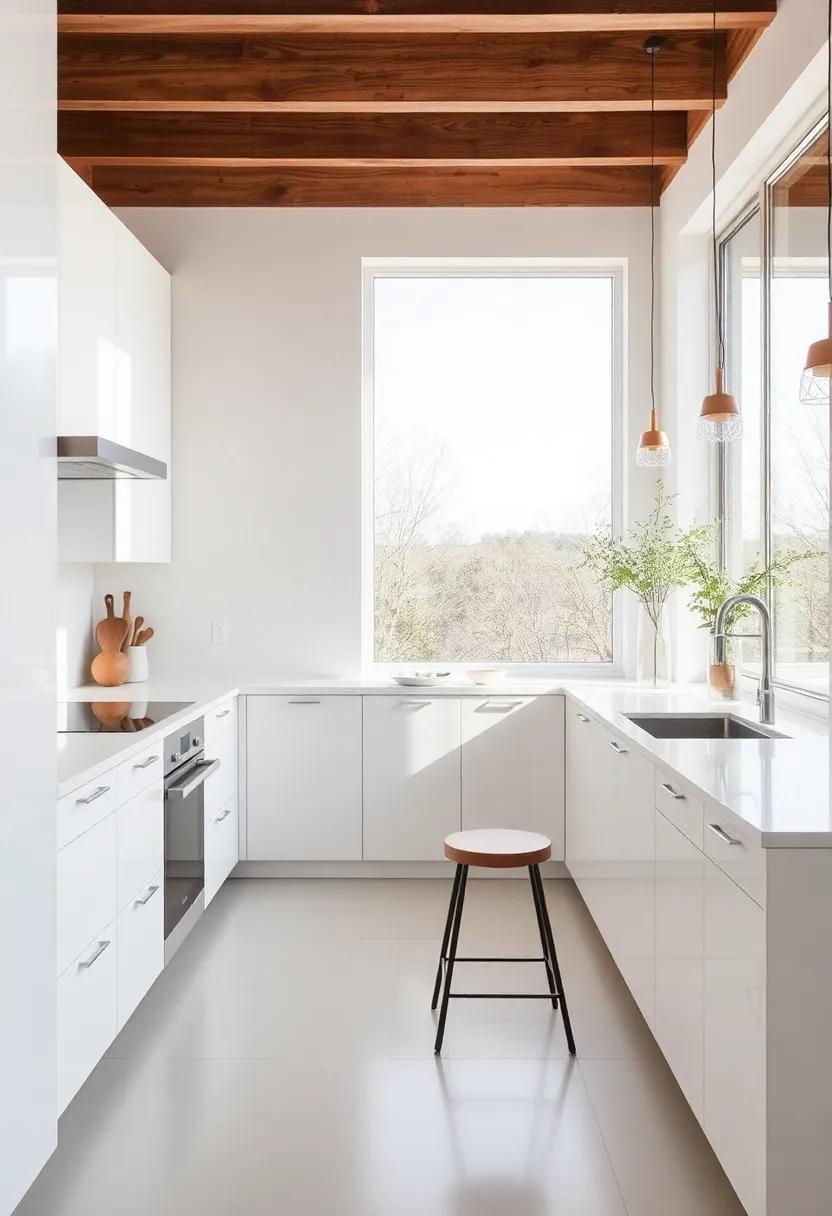
Natural light is one of the most transformative elements in a kitchen, enhancing the overall ambiance and making the space feel more expansive and inviting. Large windows, skylights, or glass doors can create a seamless connection between the indoors and outdoors, allowing sunlight to flood the area. When planning your kitchen design, consider incorporating features such as:
- Daylight Maximization: Opt for oversized windows or strategically placed openings that catch the morning or afternoon sun.
- Open Layouts: Design an open space that encourages light to travel effortlessly across different zones of the kitchen.
- Reflective Surfaces: Use glossy tiles or high-polish cabinets to bounce light around, enhancing brightness.
To further enrich the experience, think about using color palettes that complement natural light. Soft whites, pale blues, and gentle greens can amplify brightness, while darker hues can absorb it. Highlight these shades with materials such as:
- Light-colored countertops: Quartz or marble in lighter tones can reflect light beautifully.
- Glass accents: Incorporate glass shelving or decorative elements that allow light to penetrate through.
- Plant life: Introduce herbs or succulents on sunny windowsills to bring vibrancy and life to your kitchen space.
In addition, consider how your kitchen layout can be adjusted to optimize natural light flow. A thoughtful arrangement that places workspaces near windows not only makes cooking more enjoyable but can also create a more pleasant atmosphere for gatherings. To explore more ideas on utilizing natural light effectively, check out resources from The Kitchn.
Color psychology in Kitchen Interiors: Choosing the Right Palette for Your Space
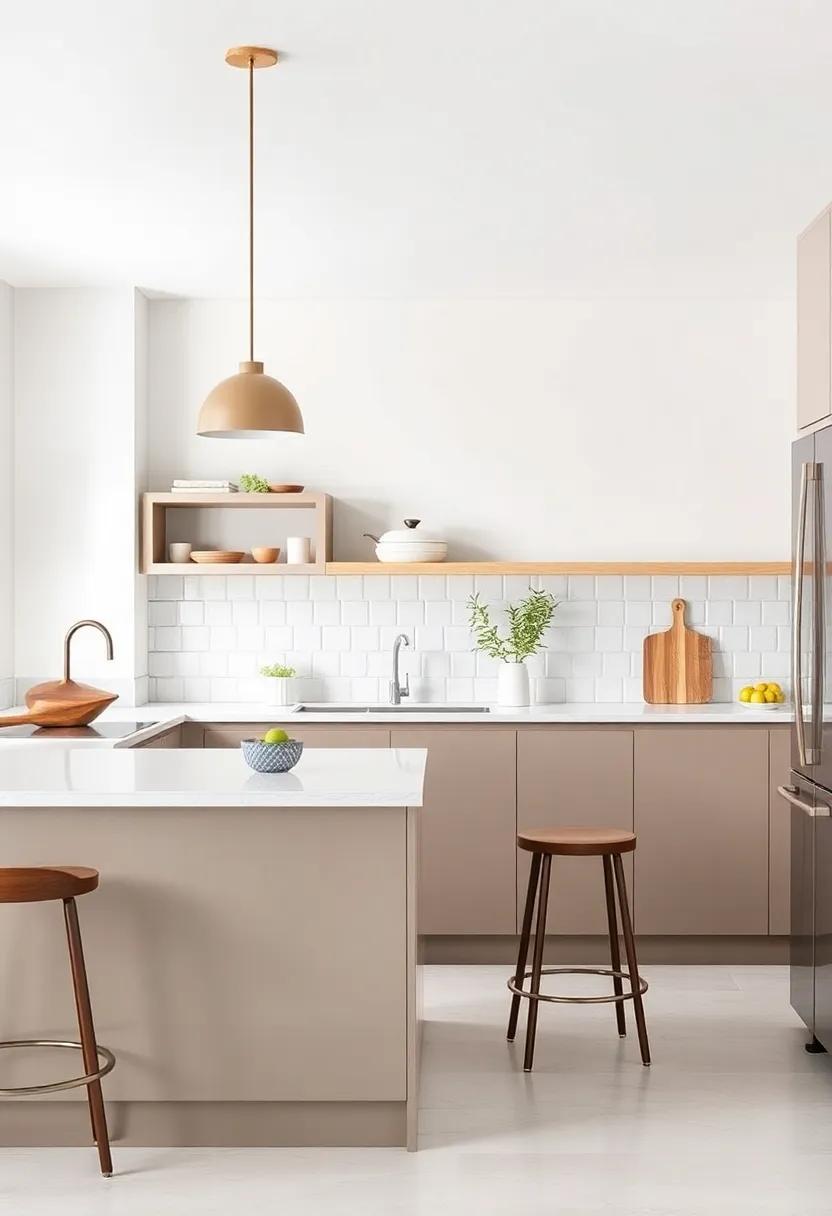
Color choices in the kitchen can significantly influence not only the aesthetic but also the mood of the space. When selecting hues, consider the psychological effects they impart. For instance, warm colors like reds and yellows are known to stimulate appetite and energy, making them ideal for culinary creativity. Conversely, cool colors such as blues and greens promote calmness and tranquility.Opting for a combination of these tones can help create a balanced atmosphere; such as, pairing a vibrant red backsplash with soft white cabinets can invigorate the room without overwhelming it.
To further refine your selection, think about the following factors:
- Lighting Conditions: Natural light can alter the perception of color, so sample shades in different lights.
- Room Size: Lighter colors can make smaller kitchens appear more spacious,while darker tones can add coziness.
- Personal Preference: Ensure the palette reflects your style and feels inviting, as you’ll spend much time here.
Additionally, incorporating texture through finishes can enhance the overall design. Consider using a Houzz styled approach where surfaces and colors complement each other for harmony.
The Rise of sustainable Materials: Eco-Friendly Choices for Your Culinary Space

Embracing sustainable materials in your kitchen can transform not only the aesthetic appeal of the space but also its environmental impact. From bamboo cabinetry to recycled glass countertops, choosing eco-friendly options helps you create a culinary space that reflects your values. imagine using natural stone sourced sustainably or low-VOC paints that promote better air quality. These choices can enhance the beauty of your kitchen while showcasing a commitment to the planet.
There are many eco-conscious materials available that offer both functionality and style.Consider incorporating items such as:
- Cork flooring – renewable and comfortable underfoot
- Reclaimed wood – rich in character and history
- Eco-friendly appliances – energy-efficient designs that save on utility bills
- Biodegradable utensils and dishware – minimal environmental impact
By making these thoughtful choices, you can cultivate a culinary haven that combines elegance and sustainability. For more inspiration on eco-friendly materials, visit TreeHugger.
Mixing Textures: Enhancing Kitchen Interiors with Versatile Material Combinations
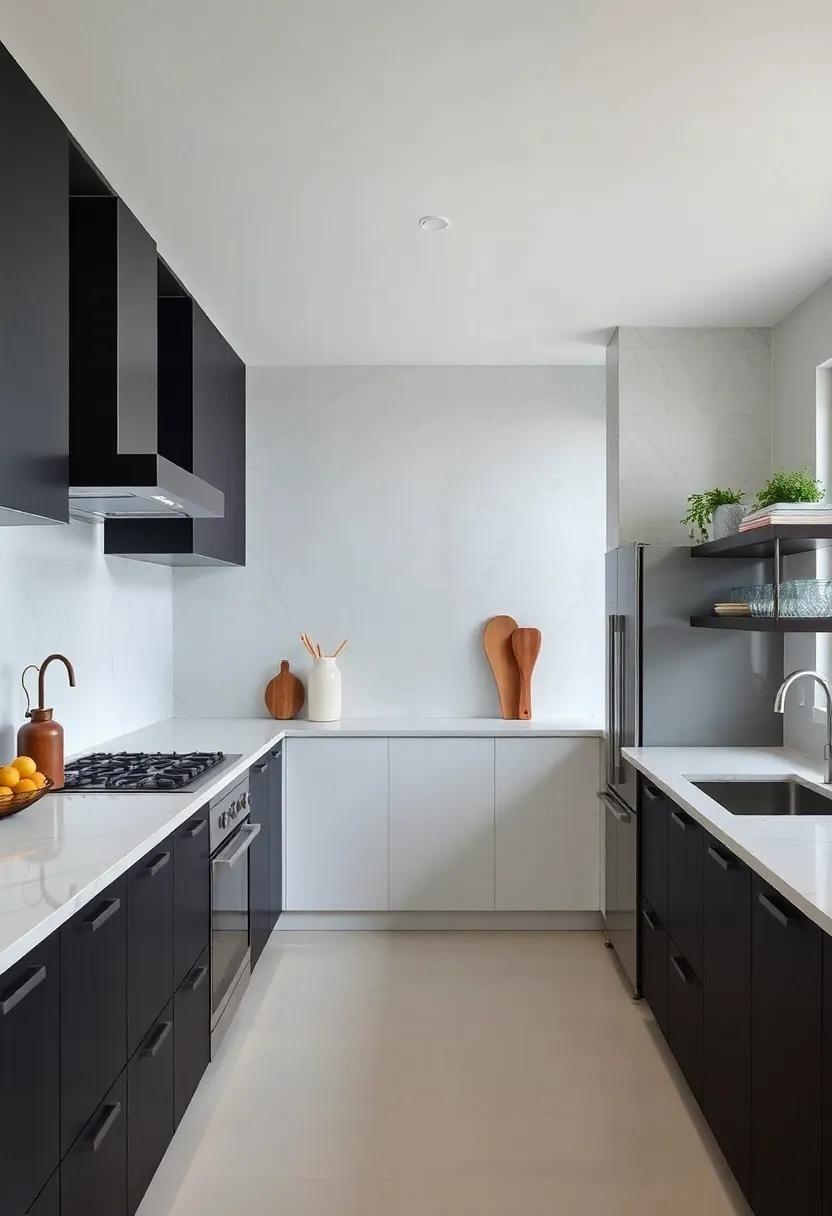
When it comes to kitchen interiors, mixing textures can bring a dynamic and inviting atmosphere to your culinary space. Incorporating a variety of materials not only enhances visual interest but also creates a tactile experience that makes cooking and entertaining more enjoyable. Consider combining rough-hewn wood cabinets with sleek stainless steel appliances, or pairing smooth marble countertops with textured ceramic tiles.This contrast can highlight the unique qualities of each material while promoting an overall harmony in design.
To elevate your kitchen transform, think beyond the conventional pairings and explore unexpected combinations. For example, you might achieve a rustic yet modern feel by juxtaposing a weathered barn wood island with industrial metal stools. Additionally, layering soft textiles, such as cotton or linen curtains, against hard surfaces like stone or glass can soften the overall aesthetic.Here are some ideas to inspire your choices:
- Granite and Glass: Ideal for sleek contemporary looks
- Bamboo and Steel: Perfect for a mix of eco-friendly and urban vibes
- Subway Tiles and Natural Stone: Timeless elegance with a tactile twist
| Material | Best Use | Texture Type |
|---|---|---|
| Reclaimed Wood | Cabinetry & Accents | Rough |
| Quartz | Countertops | Smooth |
| Ceramic Tiles | Backsplashes | Glossy/Satin |
| Metal | Appliances & Fixtures | Polished |
By thoughtfully combining these materials,your kitchen can become a canvas of creativity that tempts the inner chef in everyone who enters. Explore more ideas and inspiration at Dwell,where innovative designs come to life.
Functional Layouts: Exploring the Best Kitchen Configurations for Your Cooking Style
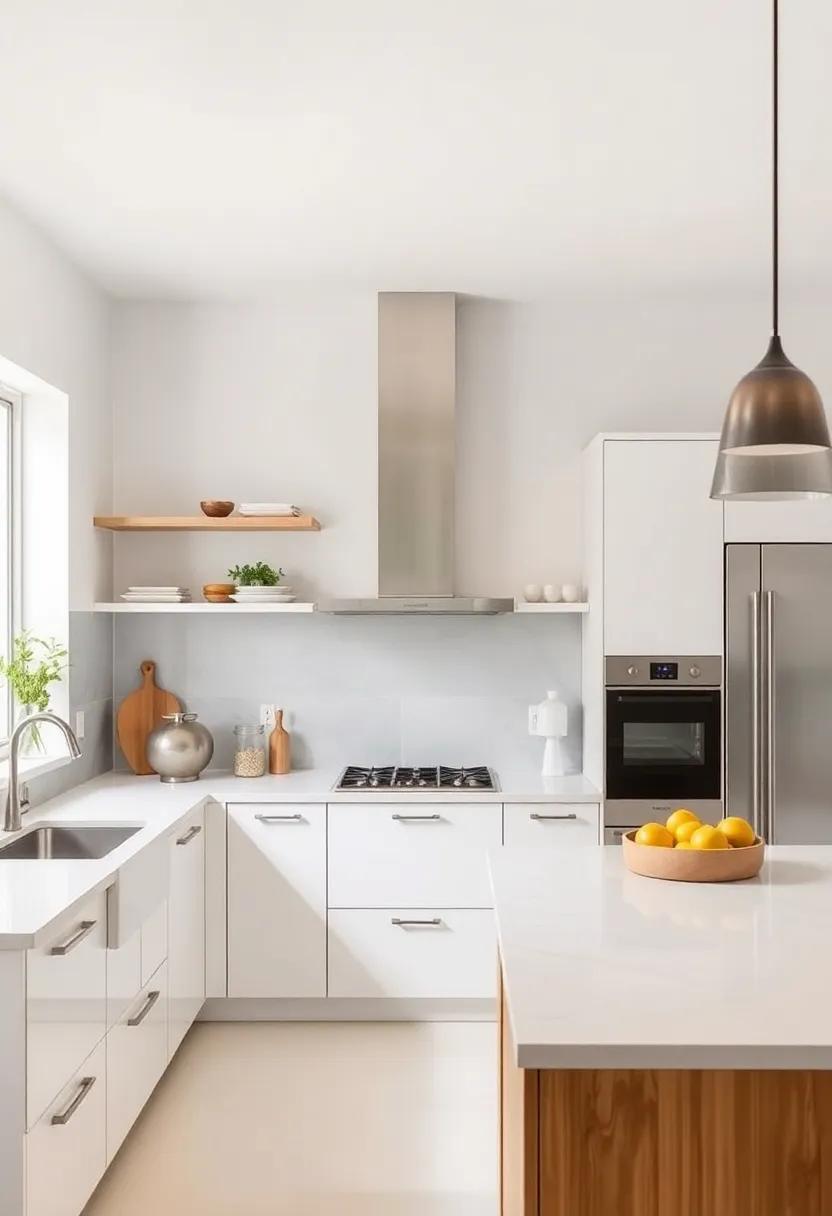
When planning a kitchen redesign, understanding various layouts is vital as they significantly influence your cooking experience. Common configurations include the L-shape, which optimizes corner space while allowing for an open flow, and the U-shape, ideal for those who appreciate ample counter space and storage. For urban dwellers, the galley kitchen serves efficiency, enabling a streamlined approach to cooking where everything is within arm’s reach. If you entertain frequently, an island layout with a dining area not only enhances functionality but also creates a social hub, inviting gatherings and interaction during meal prep.
Each layout caters to specific cooking styles and preferences,making it essential to analyze your workflow. Evaluate your habits: do you prefer cooking elaborate meals or speedy bites? Consider the following factors while choosing your configuration:
- Space Utilization: How to maximize your available area for both functionality and style.
- Storage Solutions: The importance of cabinetry and pantry access based on your ingredient needs.
- Appliance Placement: Finding the best positions for your stove, fridge, and sink to enhance efficiency.
| Layout Type | Best For | Key Feature |
|---|---|---|
| L-shape | Small to medium homes | Corner utilization |
| U-shape | Ample storage & prep space | Enclosed for cooking efficiency |
| Galley | Efficient cooking | Focused workflow |
| Island | Entertaining | Multi-functional space |
Ultimately, the kitchen should reflect not only your style but also your needs and daily practices. Dive deeper into the world of kitchen layouts and discover more on House Beautiful for tips on making the most of your culinary spaces.
Incorporating Smart Technology: modern Innovations for a Connected Kitchen Experience
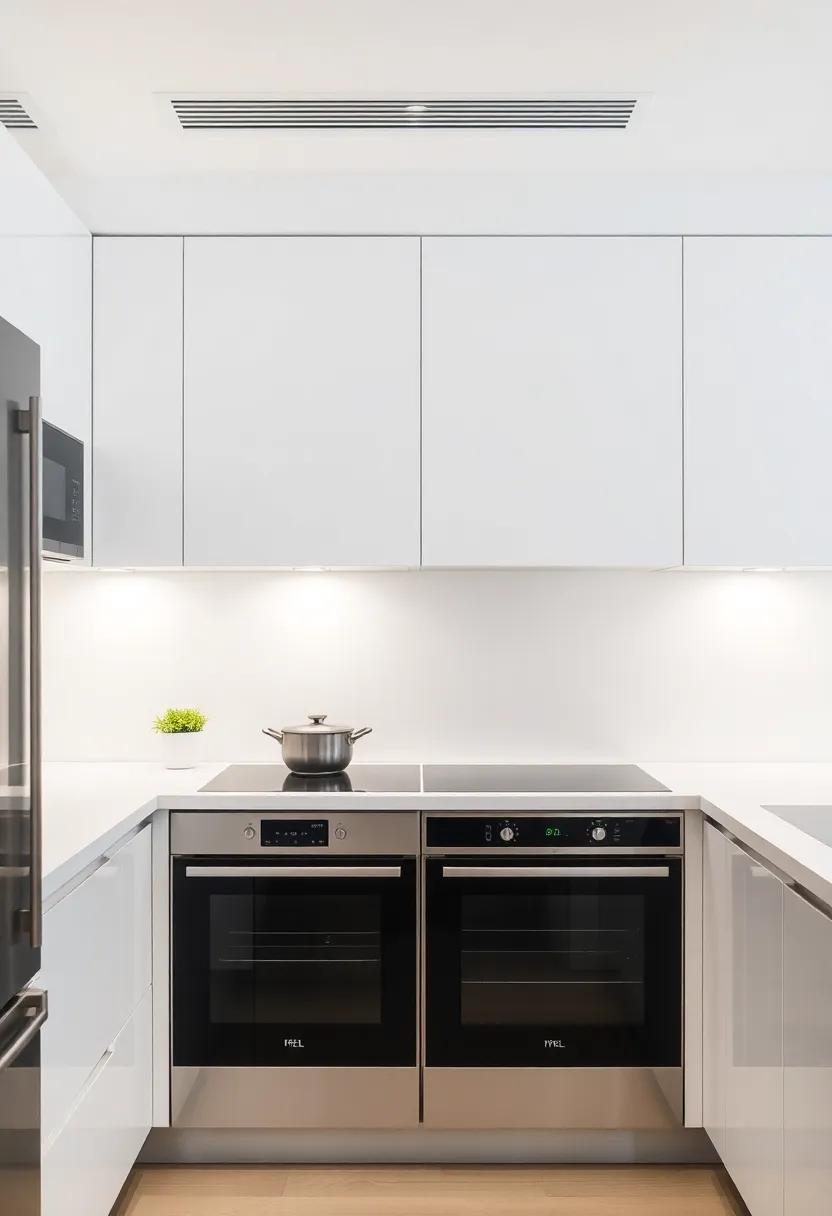
Integrating smart technology into your kitchen is not just about convenience—it’s a revolution in how we interact with our culinary spaces. Imagine using voice commands to adjust your oven’s temperature or checking your refrigerator’s inventory while shopping from your smartphone. Smart appliances, such as refrigerators that can create shopping lists, and ovens that preheat from your smartphone, streamline the cooking process, allowing for a seamless connection between meal planning and preparation. additionally,smart lighting can be adjusted with a simple voice command or mobile app,creating the perfect ambiance for any occasion.
Moreover, the incorporation of IoT (Internet of Things) devices enhances efficiency and safety in the kitchen. Consider tools like smart smoke detectors that alert you even when you’re away from home or smart scales that provide nutritional information based on the ingredients selected.These innovations are designed to not only improve functionality but also contribute to a more sustainable kitchen environment. By choosing energy-efficient smart devices, homeowners can help reduce electricity costs while also participating in a broader movement towards eco-friendly living.For more inspiration on integrating technology into your home, visit Digital Trends.
The Impact of Lighting: Designing a Well-Lit Kitchen that Inspires Cooking
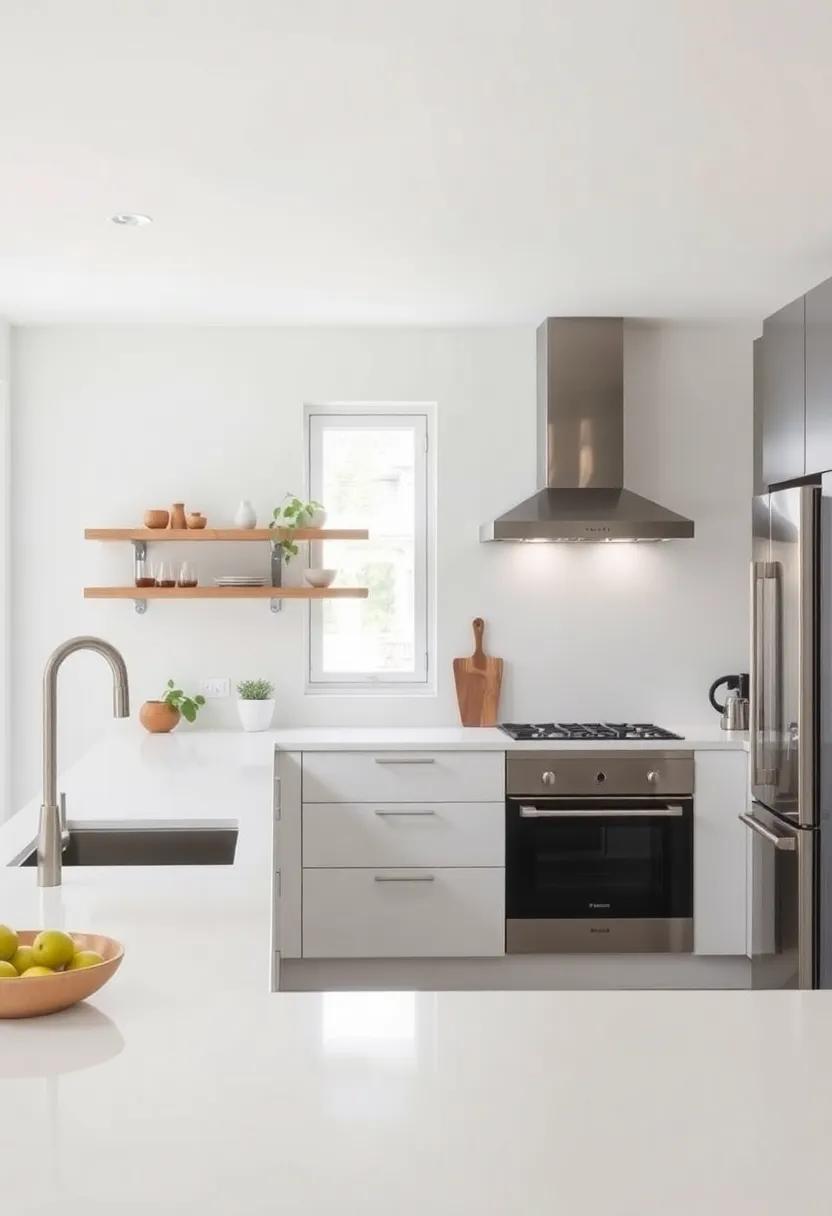
When designing a kitchen, lighting plays a pivotal role in not only enhancing the functionality of the space but also in creating an atmosphere that ignites culinary creativity. Different types of lighting can evoke various moods and serve specific purposes. As a notable example,ambient lighting provides soft,even illumination throughout,ensuring the space feels welcoming and comfortable. In contrast, task lighting—such as under-cabinet lights or pendant fixtures over work areas—focuses on illuminating countertop spaces where precision is key during food preparation. Don’t forget accent lighting, which can highlight architectural features or decor, allowing your kitchen to truly shine.
To achieve a well-lit kitchen that inspires cooking, consider incorporating some of these essential elements:
- Dimmer switches to control brightness levels depending on the time of day or mood.
- Layered lighting that combines ambient, task, and accent sources for versatility.
- Natural light through large windows or skylights, fostering an inviting and energetic environment.
- Statement fixtures, such as bold chandeliers or artistic light pendants, that double as decor.
Here’s a basic overview of lighting options to consider:
| Lighting Type | Purpose | Best Locations |
|---|---|---|
| ambient | Overall illumination | Ceiling fixtures, walls |
| Task | Focused lighting for activities | Above countertops and sinks |
| Accent | Highlight features | Open shelves, art pieces |
By carefully selecting and layering your lighting choices, you can create a vibrant and functional kitchen environment that not only makes cooking enjoyable but also inspires creativity. Explore more about kitchen lighting ideas at Houzz.
Crafting a Cozy Nook: Creating Inviting Seating Areas in Your Culinary Space
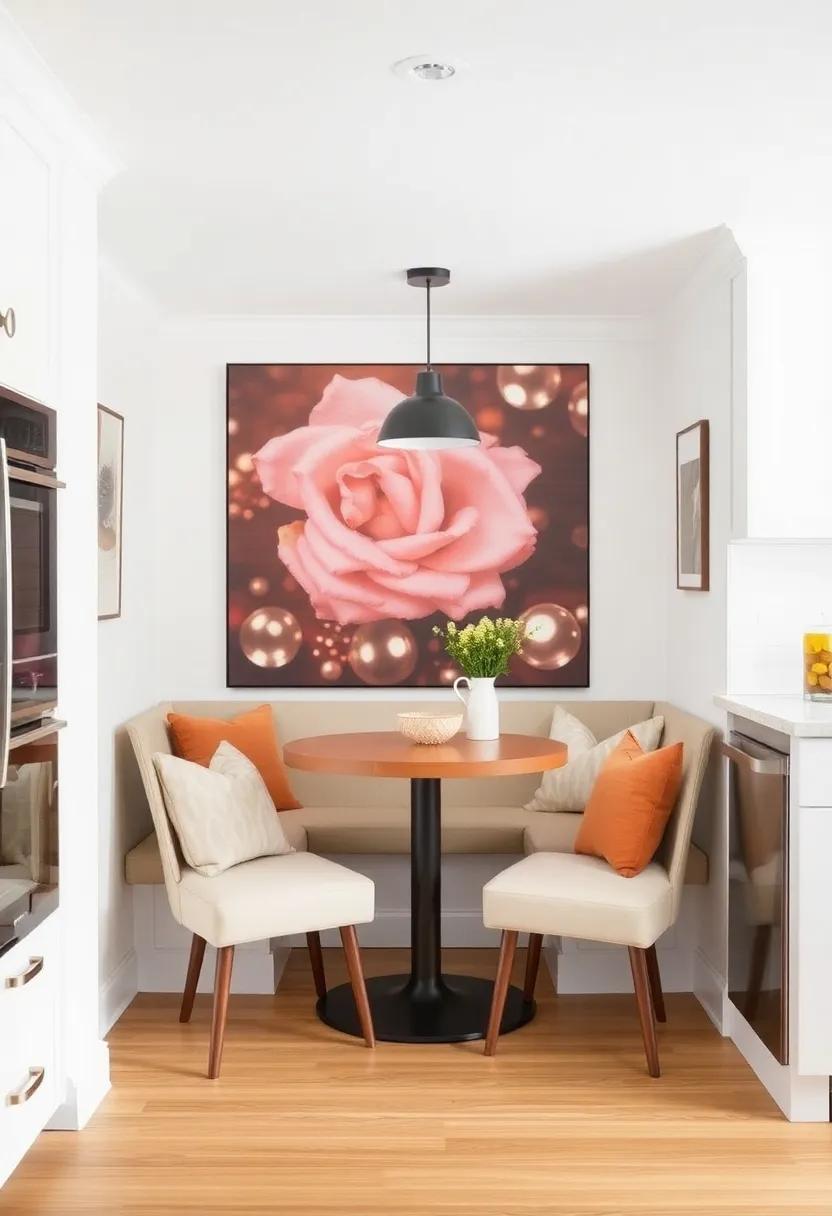
Creating a warm and inviting atmosphere in your kitchen can be as simple as incorporating a dedicated seating area that exudes comfort. Consider selecting plush cushions in soft fabrics that complement your kitchen’s color palette. add a small round table for shared meals or coffee breaks, creating an intimate space for family and friends.Accent this nook with natural materials—such as wooden chairs or a reclaimed wood table—to enhance the warmth. Don’t forget the power of lighting; a pendant lamp or wall sconces can offer gentle illumination, setting the perfect mood for those leisurely breakfasts or evening chats over wine.
To make your nook even more inviting, incorporate personal touches that reflect your style. Some ideas include:
- Hanging framed photos or artwork on the walls
- layering soft throws and cushions on seating
- Introducing potted plants or fresh herbs for a splash of greenery
For a seamless transition between cooking and dining areas, consider integrating built-in benches or a window seat that doubles as extra storage. This multifunctional approach not only facilitates space-saving but also invites spontaneous gatherings and relaxed conversations over homemade meals. Explore various design inspirations on websites like House beautiful to find the perfect look that resonates with your culinary space’s essence.
artistic Backsplashes: Using Unique Tile Designs to Elevate Kitchen Aesthetics

Injecting personality into your kitchen design can be as simple as choosing the right backsplash. Opting for bold patterns or vibrant colors can transform an ordinary space into a striking culinary canvas. From mosaic tiles that create intricate designs to hand-painted ceramics reflecting regional artistry, the possibilities are endless. Each tile can tell a story,making your kitchen not just a place for cooking but also a gallery that showcases your unique tastes. Consider geometric shapes or even 3D tiles that add depth and dimension,breaking the monotony of traditional flat surfaces.
Mix and match materials for a one-of-a-kind look that catches the eye. Some popular combinations include ceramic with glass,marble with metal,or even wood with stone,each of which brings a different aesthetic appeal. Staying on-trend with color can further enhance your kitchen’s atmosphere; lush greens and deep blues evoke a natural vibe, while bright pastels can create a lively, cheerful space. To help you visualize these elements, here’s a simple overview of popular tile materials and their characteristics:
| tile Material | Characteristics |
|---|---|
| Ceramic | Durable, easy to clean, versatile |
| Glass | Reflective, elegant, various colors |
| Stone | Natural, unique patterns, requires maintenance |
| Porcelain | Highly durable, water-resistant, suitable for high traffic |
Elevate your kitchen style further by sourcing tiles from local artisans or exploring stores like WTILE which offer unique design choices. whether you choose to create a breathtaking focal point or use subtler designs to complement the existing décor, your backsplash can play a crucial role in tying together the overall aesthetic of your culinary haven.
Showcasing Personal Style: Curating Your Kitchen Decor with Meaningful Elements
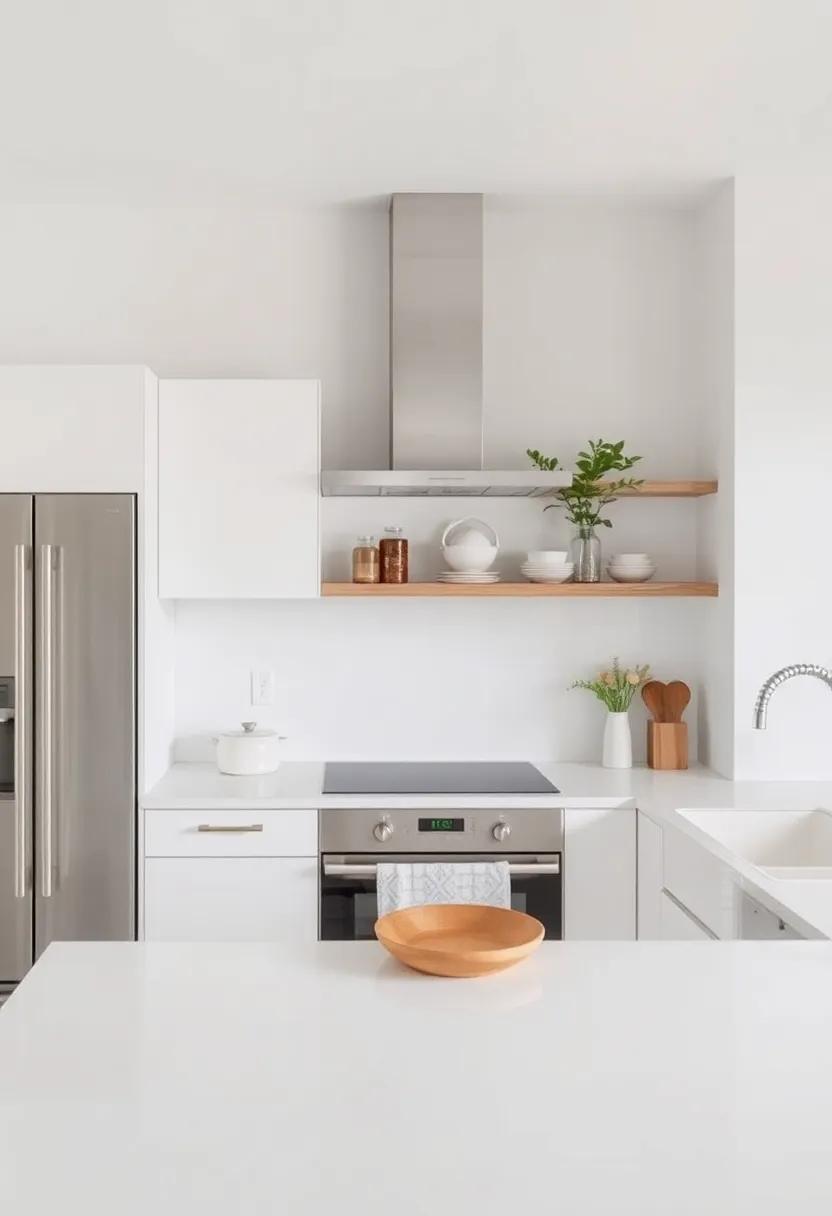
When curating your kitchen decor, consider selecting elements that resonate with your personal history and passions. An eclectic mix of decor can transform an ordinary space into a vibrant reflection of who you are. As an example, you could choose vintage glass jars that hold spices from your grandmother’s recipes, or display family photos in rustic frames on a floating shelf. Adding artwork or prints that capture your culinary journey, such as a botanical illustration of herbs or a whimsical print of iconic dishes, can also serve as a colorful infusion of personality to the walls. These thoughtful touches turn your kitchen into not just a cooking area,but a storytelling canvas that whispers tales of heritage and creativity.
Incorporating meaningful elements doesn’t have to break the bank; it’s about finding charm in simplicity and making it yours. Explore local markets or thrift stores for one-of-a-kind pieces like ceramic dishes or handcrafted utensils that evoke nostalgia and warmth. Organize a small herb garden on your windowsill with potted plants that not only beautify your space but also add fresh flavors to your meals. Don’t shy away from integrating various textures—mixing wood,metal,and textiles can create a visually stunning environment. Remember, the heart of the home is frequently enough the kitchen, and by imbuing it with personal importance, you create a sanctuary where memories are cooked up and shared. For more inspiration on creating personalized spaces, check out Apartment Therapy.
Exploring Open Shelving: Stylish storage Solutions that Showcase Your Culinary Wear
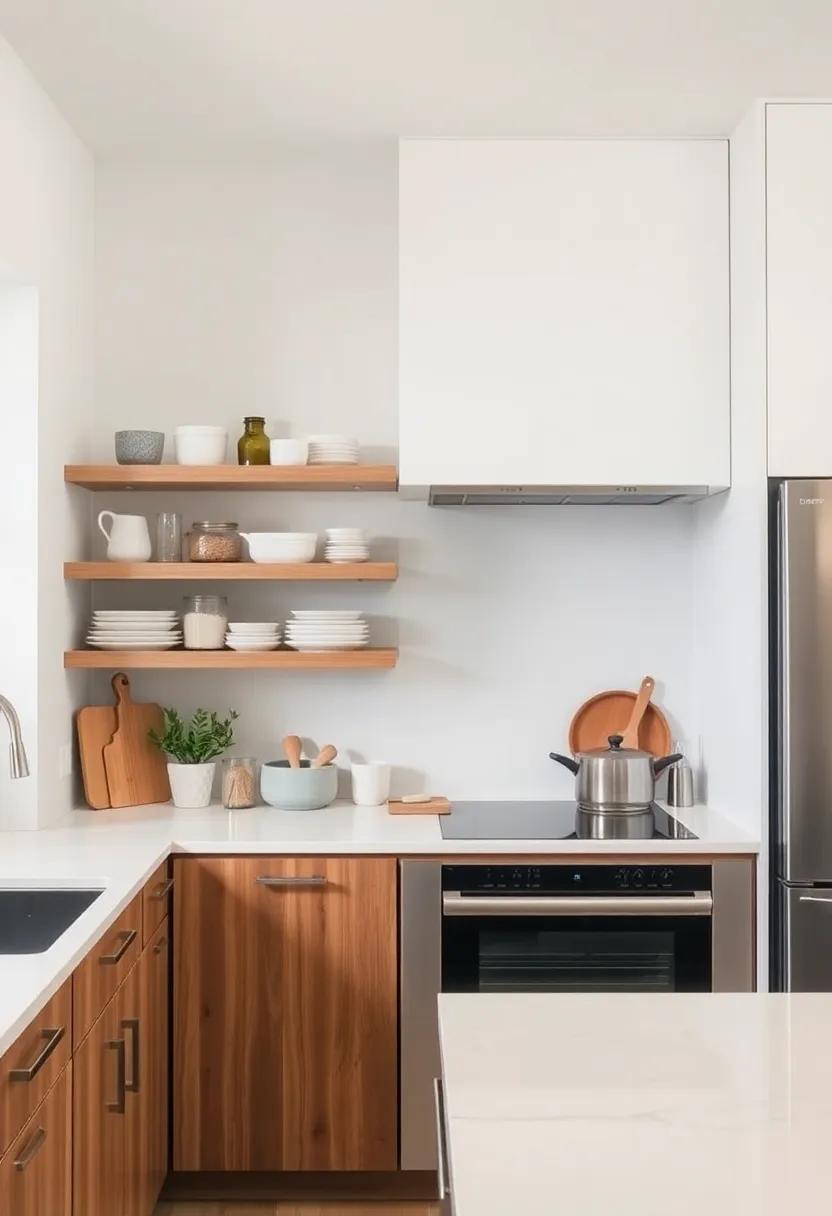
Open shelving has emerged as a game-changer in modern kitchen design, merging practicality with aesthetics. By removing traditional cabinetry and replacing it with open shelves, you not only enhance the visual appeal of your culinary space but also create an inviting atmosphere that encourages creativity and interaction.These shelves allow for the display of your favorite culinary wear, from artisanal dishware to vibrant ceramic bowls, making functional items a focal point. Consider styling your shelves with elegant groupings, ensuring a mix of heights and textures for a layered look that captivates the eye.
To make the most of open shelving,consider the following tips for styling and arrangement:
- Color Coordination: Group items by color for a cohesive look that pleases the eye.
- Mix Materials: Combine ceramic, glass, and wood to add depth and interest to your display.
- Include Greenery: Incorporate potted herbs or small plants to bring life to your kitchen.
- Functional Decor: Use beautiful storage jars that double as decor to maintain organization.
When designing your shelving, think about the overall layout and how it fits within your kitchen’s theme. A well-thought-out arrangement not only enhances efficiency but also showcases your unique style. For further inspiration and creative ideas,visit House Beautiful and explore their diverse gallery of stunning kitchen interiors.
Transforming Your Kitchen Island: Multifunctional Designs for contemporary Cooking Spaces
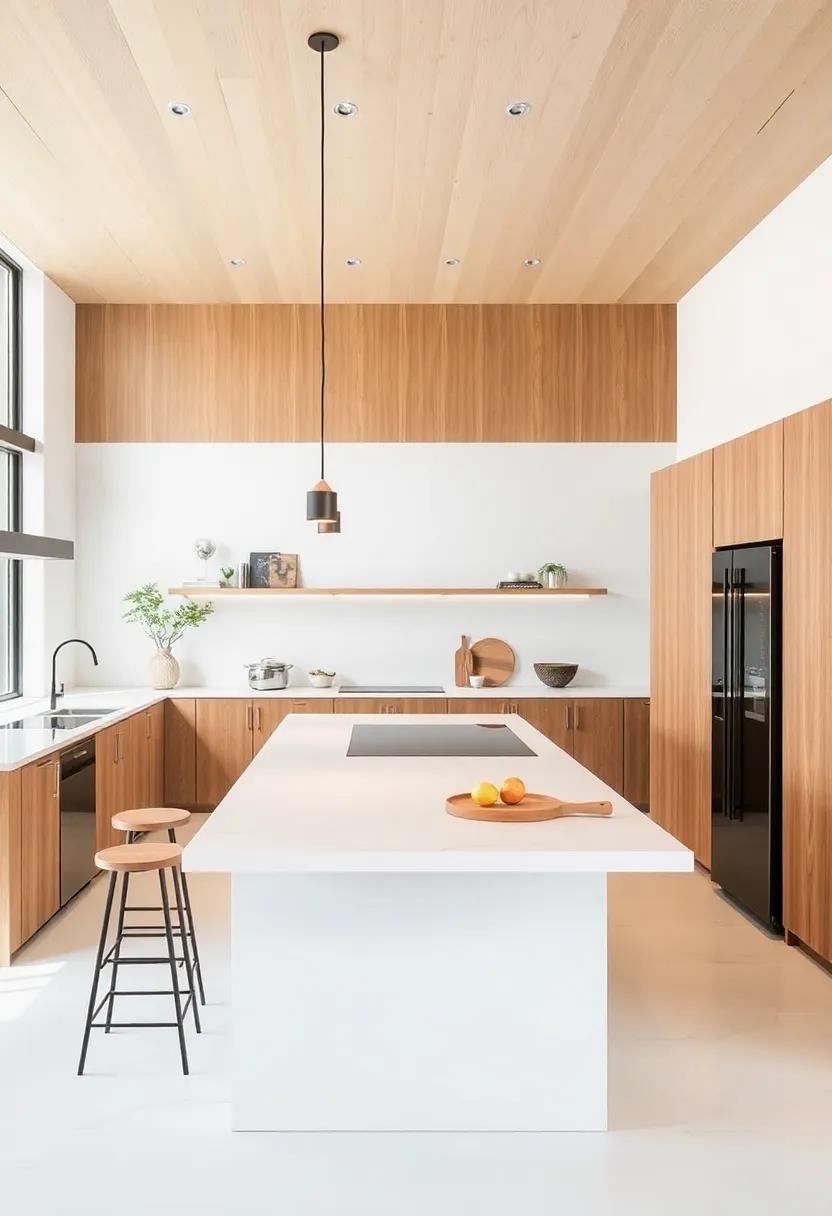
Elevate your culinary experience by reimagining your kitchen island into a multifunctional masterpiece. Begin by incorporating storage solutions that do more than just hold utensils; opt for deep drawers and pull-out shelves that maximize space efficiency.Accessories such as a built-in wine rack or hidden compartments can enhance functionality while maintaining a sleek appearance. Consider integrating appliances like a microwave or mini fridge, ensuring everything you need is within arm’s reach.Here are a few features to consider:
- Prep Sink: A separate prep sink can streamline cooking tasks and keep your main sink free for clean-up.
- Seating Area: A raised countertop can transform your island into a casual dining space for family and friends.
- smart Technology: Incorporate recipe displays or energy-efficient gadgets to modernize the cooking experience.
A contemporary kitchen island not only serves practical purposes but also acts as a stylish focal point in your cooking space. Choose materials that complement your overall kitchen design; sleek quartz or bold butcher block can redefine the aesthetic.Add decorative elements, such as pendant lighting or bar stools with personality, to enhance the visual appeal. A well-placed island can create distinct zones for cooking, eating, and entertaining. For example, you might design a table-height island that seamlessly transitions from meal preparation to a gathering space, ensuring that no one feels excluded from the culinary action.Discover more inspiration through resources like Houzz to dream up your perfect kitchen setup.
Bringing the Outdoors In: Incorporating Greenery into your Kitchen Design

Integrating plants into your kitchen design not only enhances aesthetics but also promotes a sense of well-being. Consider using herb planters that serve both functional and decorative purposes. Fresh herbs like basil, mint, and rosemary can thrive indoors with the right amount of sunlight, adding both flavor to your dishes and a pop of greenery to your countertops. Hanging plants are another fantastic option. Utilize vertical space by hanging planters from the ceiling or walls, creating a lush, tiered look that draws the eye upward and adds dimension to your space.
For a more structured approach, you might opt for ornamental plants in stylish pots that match your kitchen’s décor. Use shelves or window sills specifically designed to showcase these green elements while making them easily accessible. Another innovative idea includes creating a mini indoor garden in a forgotten corner or using a decorative cart as a mobile plant stand. by thoughtfully incorporating greenery into your culinary zone, you encourage a healthier atmosphere while exploring various textures and colors. For more inspiration on how to style your plant selections, visit apartment Therapy.
Vintage Accents in Modern Kitchens: Blending Old-World Charm with Contemporary Style
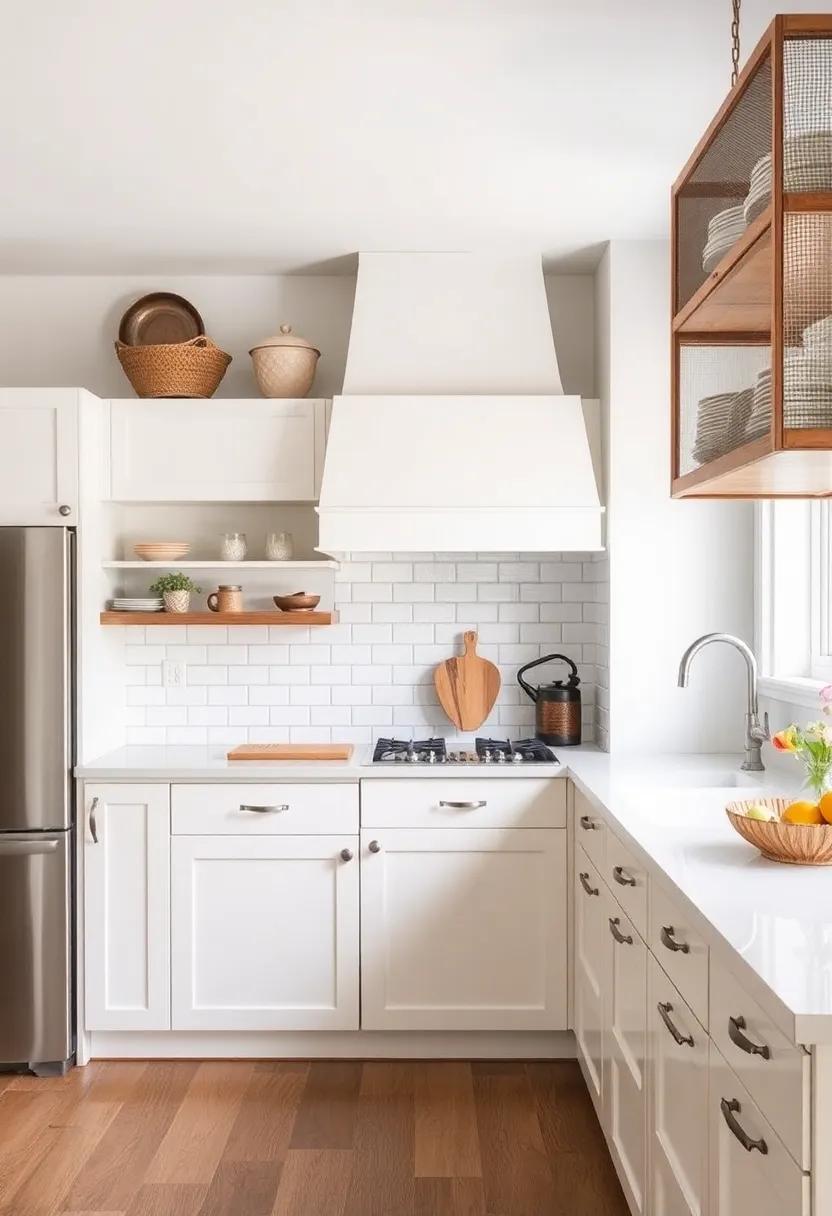
Incorporating vintage accents into modern kitchen designs offers a unique chance to celebrate the elegance of the past while enjoying the convenience of contemporary living. From reclaimed wood shelves to antique hardware, these elements allow homeowners to create a space rich in character. Consider using vintage-style tiles with intricate patterns as a backsplash, balancing the sleek lines of modern appliances and fixtures. This irresistible contrast not only adds visual interest but also speaks to the story of your home, embodying a blend of nostalgia and sophistication.
Another creative way to introduce old-world charm is through furniture choices. Think about integrating a rustic farmhouse table or vintage dining chairs into your kitchen layout. These pieces can serve as stunning focal points, grounding the design with warmth and personality.Additionally, accessories like wrought iron pot racks, mason jar storage, and antique light fixtures can enhance the vintage feel. Key features to consider include:
- Color Palette: Soft earth tones mixed with vibrant accents
- Textures: Layering different materials like wood, metal, and ceramics
- Lighting: Statement pendants or classic chandeliers for added warmth
Ultimately, the goal is to create a kitchen that not only meets the demands of modern living but also reflects your personality and love for vintage aesthetics. The fusion of contemporary design with timeless elements creates a harmonious atmosphere that is both inviting and inspiring. For more ideas on vintage decor styles, visit MyDomaine.
Creating a Culinary Gallery: Displaying Art and Cookbooks in Your Kitchen Space
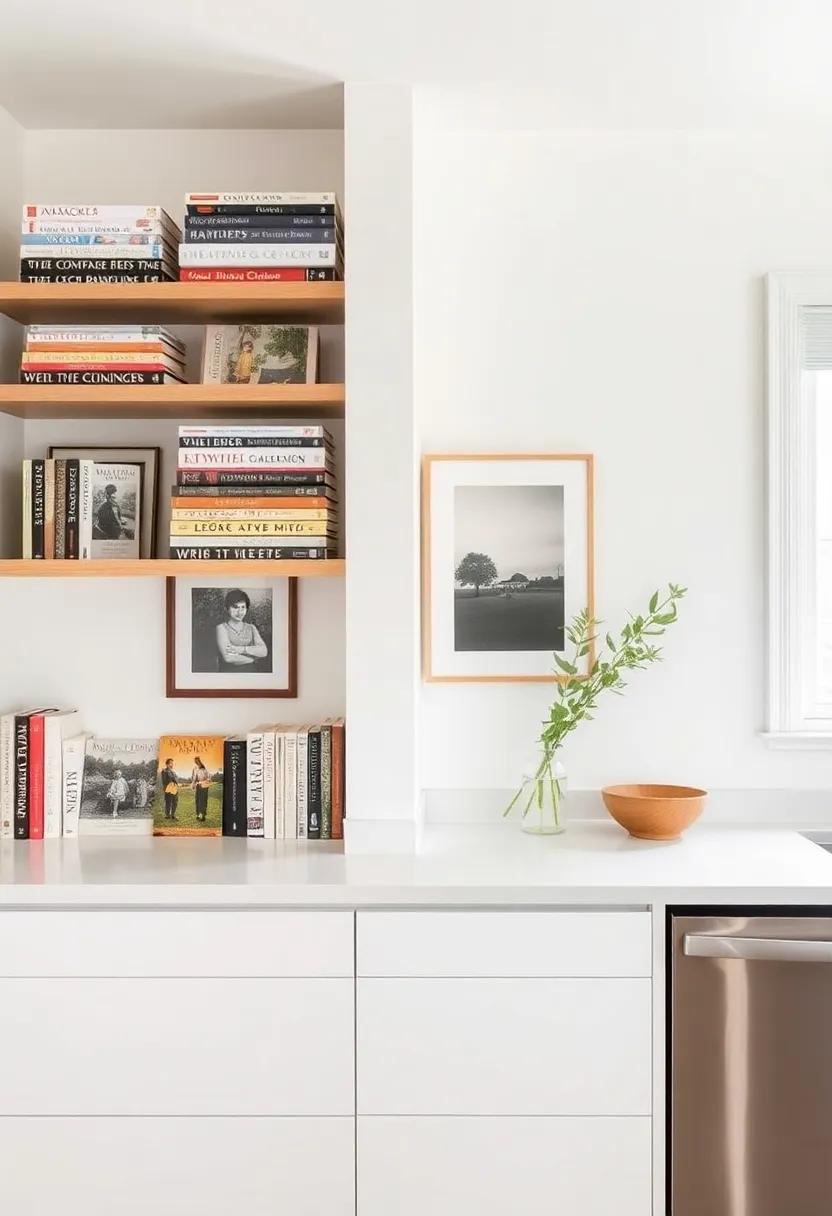
Transforming your kitchen into a culinary gallery can create an inviting atmosphere that inspires both cooking and creativity. One way to achieve this is by curating a collection of your favorite art pieces that celebrate food, cooking, and culture. Consider incorporating various forms of art,such as paintings,photographs,or sculptures that reflect your personal taste and style. Display these pieces on dedicated walls or shelves, ensuring they complement the overall aesthetic of your kitchen. consider using open shelving or floating shelves to showcase colorful cookbooks, allowing them to become part of the visual appeal while keeping them easily accessible. You might also want to group items by color or theme, creating a cohesive look that draws the eye and sparks conversation.
In addition to showcasing art and cookbooks, integrating functional decor can elevate your kitchen’s design while maintaining a culinary focus. Incorporate a stylish spice rack or a handmade wooden cutting board as part of your decor.Here are some ideas to enhance your space:
- Gallery wall: Create a dedicated space featuring framed recipes, food photography, or prints that resonate with your culinary journey.
- Artistic display: Use a mix of decorative and functional items, like artisan ceramics or unique utensils, to make a statement.
- Color pops: Choose cookbooks with vibrant covers to intersperse among your art pieces, adding visual interest and variety.
By blending aesthetics with practicality, your kitchen can become a space that delights the senses and celebrates the art of cooking. For more inspiration and tips on decorating with cookbooks, visit Architectural Digest.
Utilizing Space Efficiently: Clever Solutions for Small Kitchen Makeovers

Transforming a compact kitchen into a functional culinary hub can be achieved through innovative design and smart storage solutions. Open shelving is a popular choice among designers, offering a way to display beautiful dishware while freeing up counter space. Consider using vertical storage options like tall cabinets or racks, which allow you to utilize every inch of wall space without overwhelming the area. Incorporating a multi-functional island can also serve as a workspace, dining area, and storage unit—all in one. This adaptability ensures that even the smallest of kitchens are equipped to handle diverse tasks with ease.
To maximize usability, it’s essential to think creatively about appliances and furnishings.Narrow pull-out cabinets can fit snugly between larger installations, perfect for storing spices or utensils without cluttering the countertops. Use magnetic strips to hold knives conveniently on the wall, keeping them out of drawers and easily accessible. Incorporating foldable tables can transform your cooking area into a dining space, simply by folding them down when needed. For more inspiration on efficient kitchen designs, visit elle Decor for ideas that blend style with functionality.
Inspiring Family Interaction: Designing a Kitchen that encourages Togetherness
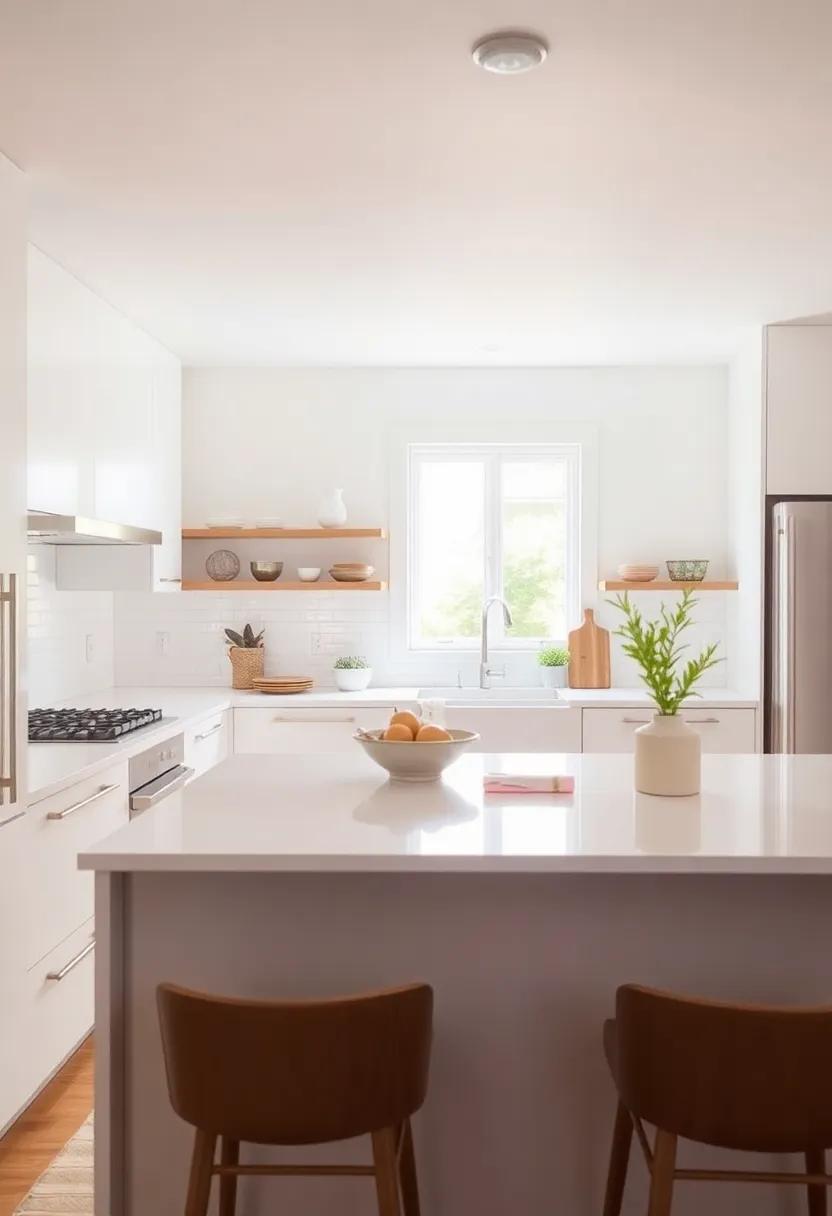
Imagine a kitchen that acts as the heartbeat of your home, where the aroma of flavorful meals mingles with the laughter of family members. Achieving this atmosphere begins with thoughtful design choices that prioritize interaction and togetherness.consider an open concept layout that seamlessly connects the kitchen to dining and living areas, allowing family members to converge in one vibrant hub.Incorporating an island with seating encourages casual conversations during meal prep, making it a perfect spot for homework, snacks, or storytelling around the culinary creation process.
Enhancing the experience doesn’t stop at layout; materials and colors play a pivotal role in fostering warmth and intimacy. Opt for warm wood tones combined with soft earth hues that invite relaxation and connection.Add personal touches like a chalkboard wall for messages or drawings, and display family photos or cherished recipes on shelves. A thoughtfully designed space not only nurtures culinary creations but also strengthens bonds, making the kitchen a sanctuary of love and shared experiences. For additional inspiration on creating an inviting kitchen, visit House Beautiful.
Key Takeaways
As we come to the end of our culinary journey through the many ways to transform your kitchen,remember that this sacred space is more than just a place to prepare meals; it’s a canvas for creativity,connection,and inspiration. Whether you opt for sleek modern lines, rustic charm, or a fusion of styles, each choice you make contributes to the unique narrative of your home.
Implementing these ideas doesn’t only enhance aesthetics; it breathes new life into your cooking experience, making every dish you create a labor of love steeped in a beautifully designed environment. So, gather your inspirations, embrace the process, and envision the endless possibilities that await. Your kitchen makeover is not just a renovation; it’s an invitation to reinvent traditions, host gatherings, and ultimately, savor the joy of cooking in a space that reflects your personality and passions. Happy transforming!
 theFASHIONtamer Where Style Meets Space, Effortlessly
theFASHIONtamer Where Style Meets Space, Effortlessly 